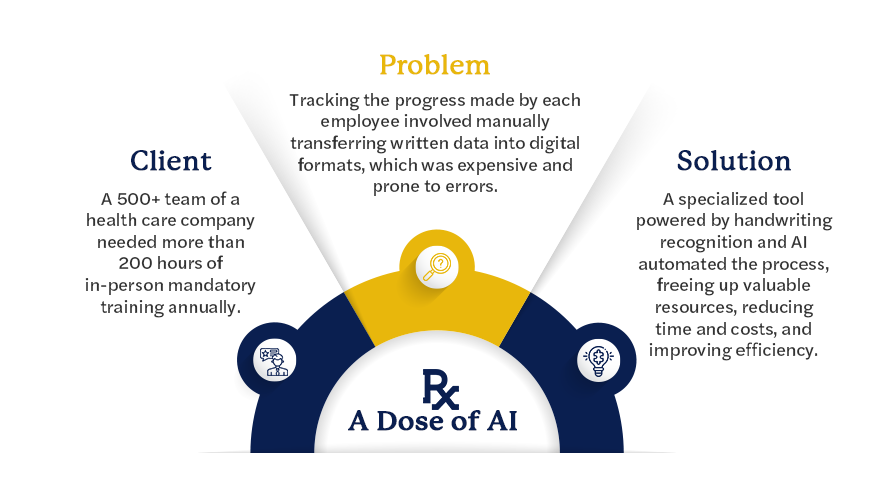Home » Services » Automation » Make data talk with intelligent automation

Knowing what a customer wants is a powerful weapon in the arsenal for organizations. Most of the time, the raw data they need lies right in front of them. However, extracting insight and intelligence from that data is a challenge that many of them are still not equipped for.
Yes, great strides have been made in the field of analytics, but this is just scratching the surface. What we refer to as big data is still just a fraction of the data an organization collects, and therein lies the opportunity. If we can transform chaos into clarity, and unusable data into insight, the potential is truly limitless.
Unstructured data drives most decisions
A large part of the data collected by organizations is unstructured. The challenge with unstructured data? The cost in terms of time, resources and effort required to analyze it and derive insights is more than the value that can be obtained from it.
That is a thought echoed by chief experience officers (CXOs) across industries. Analytics and data need to guide business decisions, but the entire effort to analyze it must be profitable as well. Human intelligence is too expensive, and prone to errors.
With intelligent automation, unstructured data can drive business success. “Maximum output with minimum intervention” — that is the key to intelligent automation. It is an area where artificial intelligence (AI) is the game changer.
When optical character recognition technology (OCR) made waves across sectors in the early 2000s, the potential to analyze data was in its infancy. OCR required inputs in a structured manner to provide an output that fueled insight. Fast forward 20 years and we have managed to extract customer preferences from content and offerings they interact with.
Tracking the gains
A couple of real-world cases help illustrate how those technologies drive efficiencies. A health care company needed to constantly train and retrain its staff throughout the year. Its 500+ team needed more than 200 hours of in-person training annually, and these training sessions were mandatory. But to track these training sessions, the progress made by each employee across geographies and time zones and transferring written data into digital formats required human intervention. Think of entire teams of employees updating the online database manually after going through attendance sheets filled in by hand.
A specialized tool powered by handwriting recognition and AI, enabled the company to automate the process, freeing up valuable resources, while lowering time costs and improving efficiency. In another instance, a large financial services company used a secure AI chatbot to help its employees — investment advisors and traders — deal with technology and software-related issues. This AI chatbot would collect data on the number and types of issues (quantifiable and structured), as well as the sentiment change caused by the issues (qualitative and unstructured).
After two months of collecting data, they learned that their employees were not happy using some of the features and applications. While the IT team felt the issues were within acceptable service levels, the unstructured data pointed out areas that needed urgent solutions. This real-time sentiment analysis provided better insight into challenges faced by the employees and helped the company's management focus on the areas that needed addressing. It helped them solve an issue that if left unresolved would have led to increased employee frustration. But that is not the only victory for unstructured data here.
The interactions with the AI also allowed the financial services company to understand what made its employees happy, and when they were happy, helping them do more for their team. Content that was broadcast to the entire network via the AI chatbot was analyzed thoroughly, and the sentiment gains alone made the whole effort worth the time and investment.
Contact
Our experts can help you find the right solutions to meet your needs.
Get in touch
